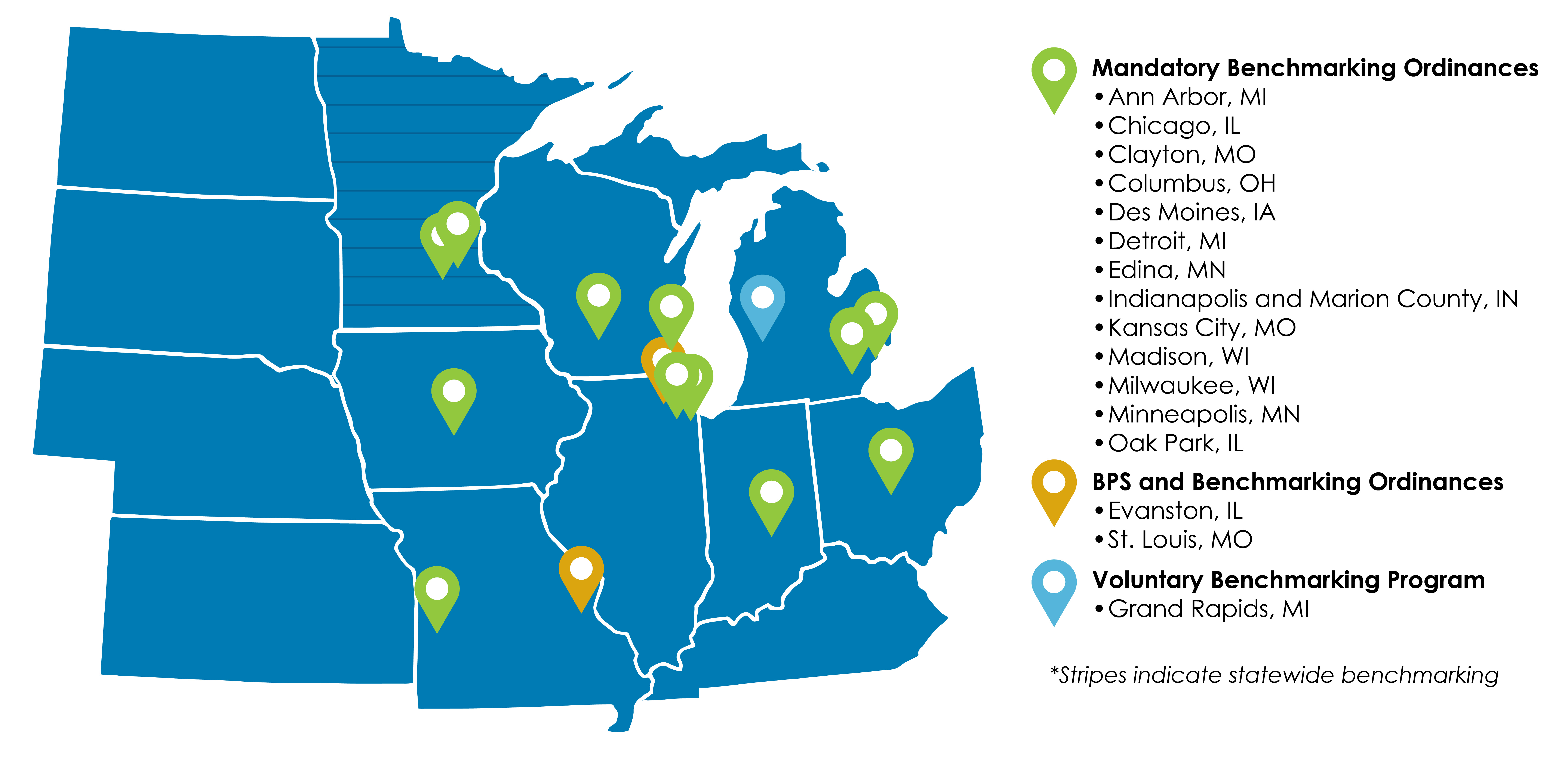What is a Building Performance Standard?
A Building Performance Standard (BPS) sets energy use or carbon emissions thresholds for commercial and multifamily residential buildings, often enacted at the city or state level. In order to ensure tracking and compliance, energy consumption of buildings is measured by trained energy professionals and reported to the proper governmental entities, such as a local Office of Sustainability.
Currently, in the Midwest, two cities have enacted a full BPS (St. Louis, MO & Evanston, IL). Though as seen in the graphic below, many cities have implemented benchmarking, the baseline of a Building Performance Standard. In benchmarking, jurisdictions measure a building's energy use, without an enforceable limit. Though no energy target is required in benchmarking, simply collecting the data and analyzing areas of inefficiency allows building operators to find ways to make their buildings more efficient, such as ensuring HVAC settings are correct, or light sensors are operating correctly. Over time, buildings that consistently benchmark typically reduce their energy use 8-10%, according to research by the EPA.
Midwest Municipal Benchmarking Programs

Benefits of a BPS
Building upon benchmarking programs and tracked data, a Building Performance Standard sets enforceable energy targets. Benefits of an efficient building include: tenant safety; tenant comfort; better indoor air quality, and less energy use and reduced GHG emissions.
Another benefit of a BPS is that it can affect both old and new buildings. Though it targets existing buildings (an often hard-to-target area), it can influence how new buildings are constructed so the new buildings meet the conditions of the BPS.
How to Create a Useful BPS
First, authorities must decide what metrics to include in the BPS, such as building type (commercial, industrial, residential, multifamily) and building size. Next, they must set clearly defined timelines and goals (often GHG emission reductions) for the buildings, being mindful and realistic about the time it can take to learn the BPS process and act on the suggested measures. In addition, authorities must ensure building operators are properly trained regarding the new measures and make it very clear where operators can go with questions they have about the program and where to get support.
Setting ambitious goals while being mindful of the challenges building operators face is a major part of a successful BPS. Continued meetings with building operators, owners and other stakeholders are crucial to ensure targets are met.
Compliance
Part of any successful plan is reporting and compliance. As stated, building data must be submitted (and in some occasions 3rd party verified) to the proper local government agency. If buildings exceed their energy or GHG emission threshold, they must make operational and/or capital improvements to reduce energy consumption and bring the property into compliance. If the building does not come into compliance, fines could be levied against the person or group that owns the property.
For further help on how to create a useful BPS, the EPA offers guidance which can be found here.